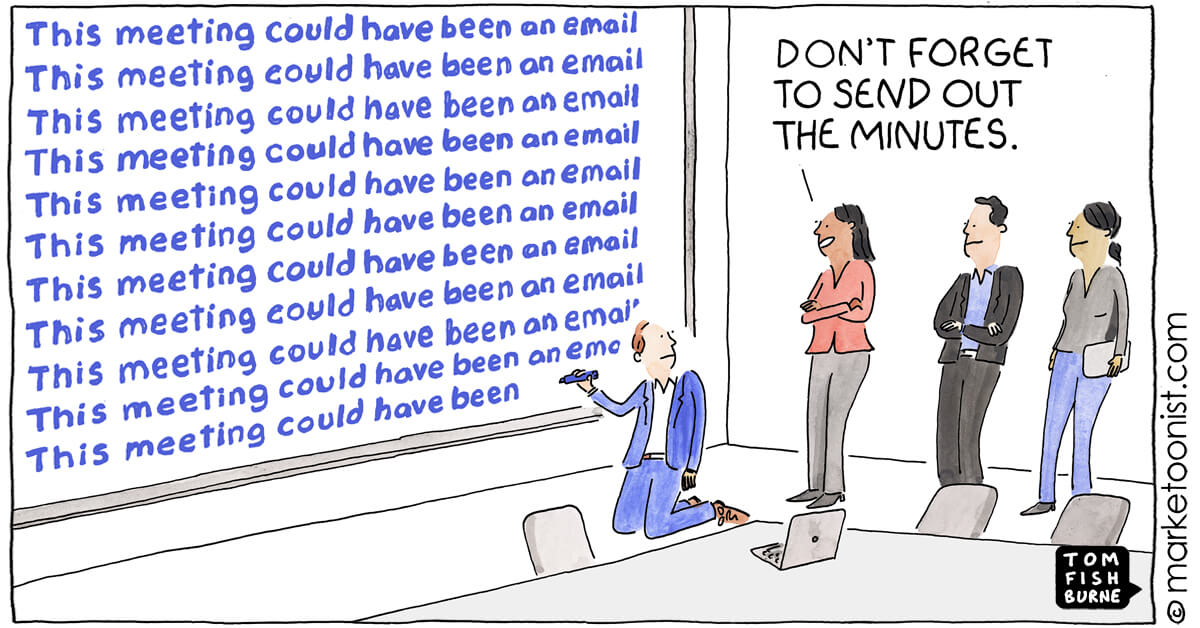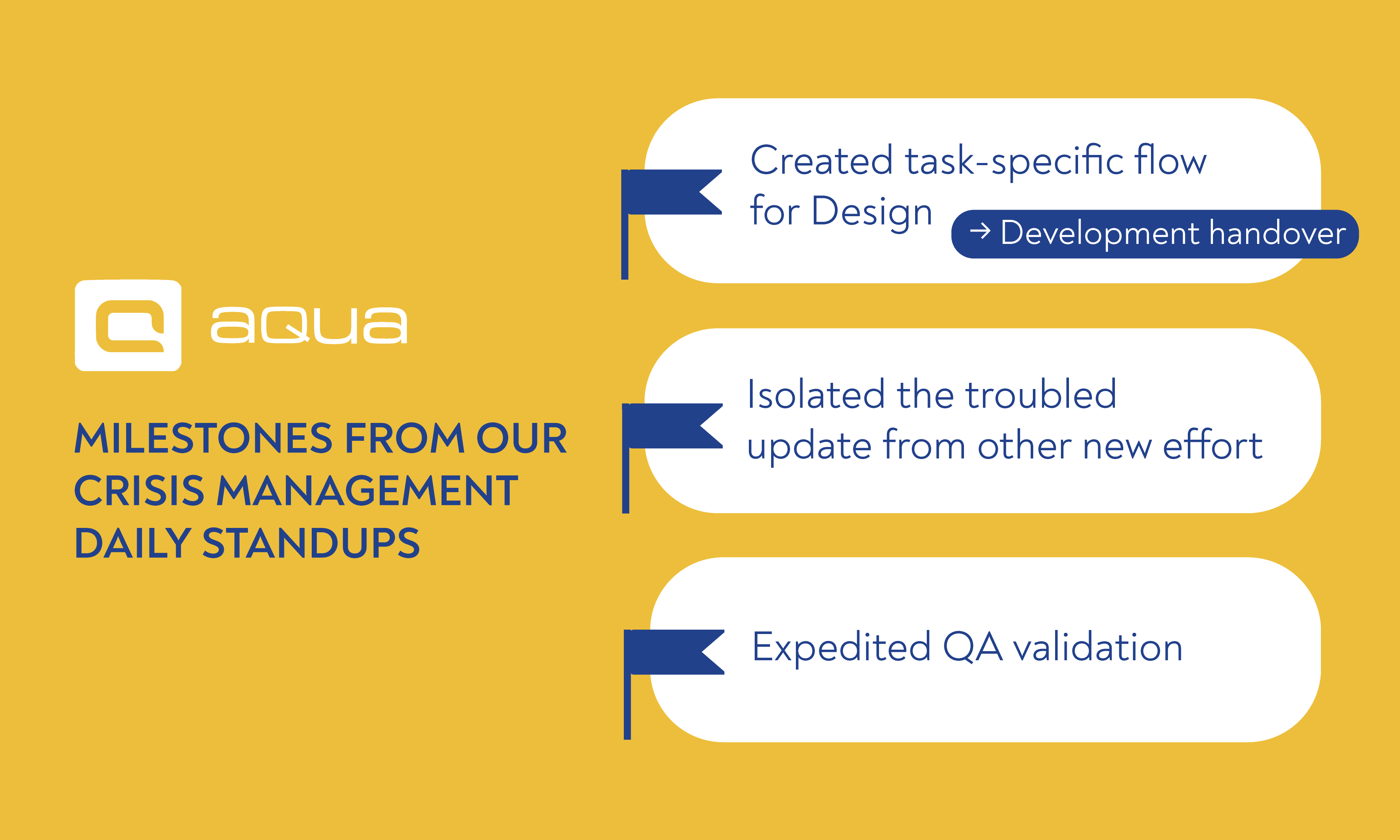Why would you need testing team standups?
Here are the main reasons to hold a dedicated test team standup:
- Daily standups make it easier to keep a horizontal hierarchy. For a new team member, it can be daunting to ask or keep asking for advice from senior colleagues. After all, they probably have their important things to do while you’re asking things that would seem basic to them. There will definitely be some anxiety that could affect the tester’s work and would certainly affect their mood.
The format of standups, however, puts everyone in the same position. All members of the team share what they did yesterday and what is their plan for today. People mention setbacks and take the opportunity for a quick question to a colleague. You get to hear fellow employees give a status update toward a common goal — not see a boss request a report from their subordinates. - Public status updates boost QA creativity. Software testing requires both an analytical foundation and a keen mind to tackle issues. Just speaking about a bug that you’re struggling to pinpoint can give you a new perspective. The input of colleagues during or after the meeting could help you where documentation or internet won’t. Facilitate collaboration of ingenious testers, as that’s how you build an effective QA team.
- Standups provide a sense of progression. The regular Agile cycle of two weeks is a long time to see the fruits of your labor. There is one more pitfall: some features take longer than a sprint, which means there absolutely will be dull(er) releases. Verifying a bug fix for a minor issue can feel like an inconsequential work time.
On the other hand, daily standups start at how things were yesterday, continue with where you left them off by evening, and finish with plans for today. In just a couple of minutes, everyone gets to look at three different timeline points of their workload. That feels like progress even when there is actually very little progress.

The perfect test management tool to see progression and enjoy it
Are there any arguments against standups in the QA team?
You won’t find many companies praising their QA standups, and here are a couple of ideas why:
- Time and redundancy are the main reasons why you may not want to hold QA-exclusive standups. Even just 15 or 20 minutes is a noticeable chunk of an 8-hour workday. That is at least 2.5 hours per sprint that could have been spent on “actual work” instead — and you’re attending the regular standup for the Agile team anyway!
Redundancy is a case-by-case matter. The time concern, however, can be addressed with a different approach to QA planning. Our advice: don’t fill everyone’s calendar with 7.5 hours of tasks per day.
Instead, estimate all tickets and try more conservative scheduling, e.g. assigning everyone no more than 6 hours/day of tickets from the task tracker. This will leave some time for other activities that your team has to do anyway, and you could find room for a QA standup as well. - Testing standups miss the point of Agile. One of its key benefits is putting everyone in the same boat to improve communication across the deck. In that sense, QA-exclusive meetings are just a form of addressing everyday routine rather than a genuine Agile standup.
- QA standups can be excessive. Testing teams are often small, and that commonly means little interaction between testers. If your job seldom overlaps with that other testers do, this meme may very well apply.


A better way to promote communication
QA standups may or may not work for your team. We could, however, all benefit from reaching the eluding goal of better communication. Why not start with daily standups for blocker-resolving squads?
Late in 2022, we decided to upgrade all fonts across the website for our aqua testing tool. This seemed like an easily scalable task: pick the font, choose letter sizes, and apply the new font to all website pages. Alas, like most simple things in life, this got complicated.
After some trial and error, we realised that all pages will need to be redesigned with the new fonts in mind. That also meant a lot of manual effort for the development team to reimplement the new pages. The worst part is we couldn’t continue to expand the website until the font endeavour was completed. Otherwise, any new page would have to be implemented and then upgraded in a very short time span.
All these unpleasant discoveries created a whole new scope for the kind of overhaul that most team members haven’t experienced. There is a lot of somewhat new work that blocks any other work. Regular communication is not made for Design, Marketing, Development, and QA tackling a colossal effort of redoing the entire website.
So, we started to hold daily meetings for this now-painstaking effort of updating fonts across the website. These meetings encouraged regular status updates but more importantly helped address blockers very quickly. Here are the things that we achieved with these meetings:
- Develop the task-specific format for the Design→Development page handover
- Find a way to isolate the font update effort from the implementation of new pages
- Optimise the interaction with QA to quickly validate pages with upgraded fonts
These situational standups allowed us to drastically reduce lead time for a task that got out of hand. We have now finished the fonts update and are still on track for a few exciting feature launches.

Conclusion
Daily standups in QA have a variety of benefits as long as they fit your team. They work best for larger QA teams, especially with fewer senior employees and new people coming in. If you are experiencing a major bottleneck that involves QA, cross-team daily standups will be a better solution.
Advanced all-in-one ALM for all IT-related teams






